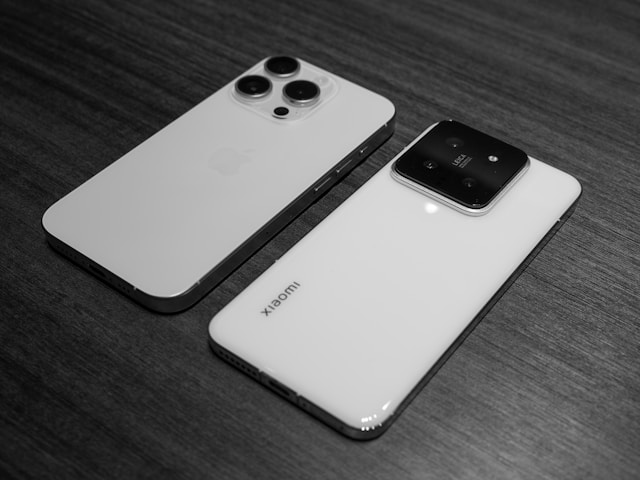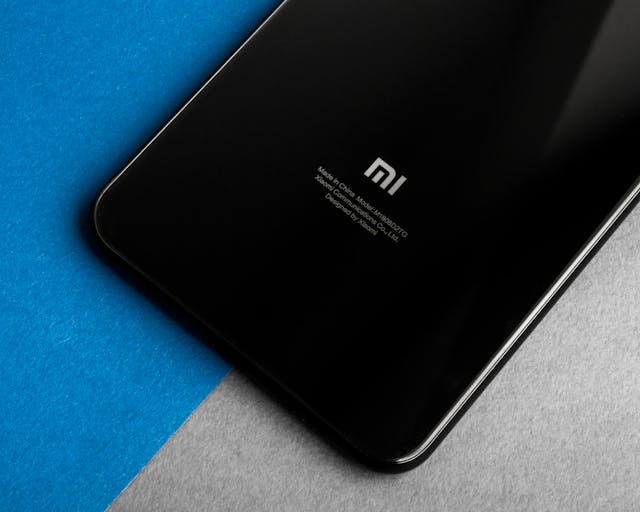Xiaomi has carved a unique niche in the competitive consumer electronics market. Its meteoric rise from a startup in 2010 to one of the world’s leading smartphone manufacturers is a testament to its strategic brilliance.
Here we’ll analyze Xiaomi’s marketing strategy, offering insights into how the company has successfully navigated the global market. By examining key campaigns and tactics, marketing professionals can glean valuable lessons from Xiaomi’s approach.
The Power of Community Engagement
At the heart of Xiaomi’s marketing strategy lies a robust community engagement model. Unlike many of its competitors, Xiaomi places significant emphasis on building and nurturing a strong user community. This community-centric approach has been instrumental in fostering brand loyalty and driving organic growth.
Mi Fans and Mi Community
Xiaomi’s “Mi Fans” are more than just customers; they are brand ambassadors who play a crucial role in the company’s product development and marketing. The Mi Community platform allows users to interact with the brand, provide feedback, and participate in various activities. This two-way communication channel ensures that Xiaomi remains attuned to its customers’ needs and preferences.
Case Study: Mi Pop Events
Xiaomi organizes Mi Pop events, which are large fan gatherings featuring product launches, entertainment, and interactive sessions with company executives. These events not only boost community engagement but also generate significant buzz and media coverage. By involving fans directly in these activities, Xiaomi cultivates a sense of belonging and excitement around its brand.

Leveraging Social Media and Digital Marketing
Xiaomi’s adept use of social media and digital marketing has been a cornerstone of its success. The company’s ability to create viral content and engage with users on various platforms has set it apart from many traditional tech giants.
Social Media Campaigns
Xiaomi employs creative social media campaigns to promote its products and engage with its audience. The company’s social media strategy is characterized by its interactive and playful content, which resonates well with younger demographics.
Case Study: Mi Bunny and Viral Marketing
The Mi Bunny, Xiaomi’s official mascot, features prominently in the company’s marketing campaigns. By using the mascot in creative and humorous ways, Xiaomi has successfully created viral content that spreads rapidly across social media platforms. For instance, during product launches, the Mi Bunny is often seen in various adventurous scenarios, capturing the imagination of fans and generating widespread interest.
Influencer Collaborations
Collaborating with influencers and tech bloggers has been another effective strategy for Xiaomi. By leveraging the reach and credibility of influencers, Xiaomi ensures that its products receive extensive visibility and positive reviews. These collaborations help in building trust and driving conversions among potential customers.
Direct-to-Consumer Sales Model
One of the distinctive aspects of Xiaomi’s marketing strategy is its direct-to-consumer (D2C) sales model. By bypassing traditional retail channels, Xiaomi can offer high-quality products at competitive prices.
Online Flash Sales
Xiaomi popularized the concept of online flash sales, where a limited number of products are made available for purchase at a specific time. These flash sales create a sense of urgency and excitement among consumers, leading to quick sell-outs and extensive media coverage.
Case Study: First Flash Sale in India
Xiaomi’s first flash sale in India is a prime example of this strategy’s effectiveness. When the company launched its Mi 3 smartphone in 2014, it sold out within seconds, creating a massive buzz. The success of this campaign not only established Xiaomi’s presence in the Indian market but also highlighted the demand for its products.

Strategic Pricing and Value Proposition
Xiaomi’s pricing strategy is another key factor behind its success. The company adopts a cost-efficient approach, offering high-quality products at affordable prices. This strategy, combined with a strong value proposition, has enabled Xiaomi to attract a broad customer base.
Economies of Scale and Cost Control
Xiaomi achieves competitive pricing through economies of scale and rigorous cost control. By keeping profit margins low and focusing on volume sales, the company can offer premium features at prices significantly lower than its competitors.
Case Study: Redmi Series
The Redmi series is a testament to Xiaomi’s strategic pricing. These smartphones offer high-end features such as powerful processors, high-resolution cameras, and large batteries at budget-friendly prices. The success of the Redmi series has been instrumental in Xiaomi’s dominance in key markets like India and China.
Innovation and R&D Focus
Innovation is at the core of Xiaomi’s product development and marketing strategy. The company invests heavily in research and development to ensure that its products are at the forefront of technology.
Product Diversification
Xiaomi’s product portfolio extends beyond smartphones to include smart home devices, wearables, and lifestyle products. This diversification allows the company to tap into multiple markets and create a comprehensive ecosystem of interconnected devices.
Case Study: Mi Ecosystem
The Mi Ecosystem, also known as MIJIA, comprises a wide range of smart products designed to enhance the user’s lifestyle. From smart bulbs and air purifiers to fitness bands and electric scooters, Xiaomi’s ecosystem approach not only drives sales but also fosters brand loyalty as users integrate multiple Xiaomi products into their daily lives.
Data-Driven Decision Making
Xiaomi’s marketing strategy is underpinned by data-driven decision making. The company leverages big data and analytics to understand customer behavior, optimize marketing campaigns, and improve product offerings.
User Feedback and Iteration
By continuously gathering and analyzing user feedback, Xiaomi can iterate on its products and marketing strategies. This agile approach ensures that the company remains responsive to market trends and customer needs.
Case Study: MIUI Customization
MIUI, Xiaomi’s custom Android ROM, is a prime example of the company’s data-driven approach. Xiaomi actively solicits feedback from its user community to make regular updates and improvements to MIUI. This iterative process not only enhances user satisfaction but also fosters a sense of ownership among the users.
Global Expansion and Localization
Xiaomi’s global expansion strategy involves careful localization of its products and marketing efforts to cater to diverse markets. This localization ensures that the brand resonates with local consumers and meets their specific needs.
Market-Specific Strategies
Xiaomi tailors its marketing campaigns to align with the cultural nuances and preferences of different regions. By understanding local consumer behavior and adapting its approach accordingly, Xiaomi has successfully entered and grown in various international markets.
Case Study: Localization in India
In India, Xiaomi has adapted its product offerings and marketing campaigns to suit local preferences. The company has launched smartphones with features specifically designed for the Indian market, such as dual SIM capabilities and support for regional languages. Additionally, Xiaomi’s marketing campaigns in India often incorporate local festivals and cultural themes, making the brand more relatable to Indian consumers.

Strategic Partnerships and Collaborations
Strategic partnerships and collaborations have played a crucial role in Xiaomi’s marketing success. By teaming up with other companies, Xiaomi can leverage complementary strengths and expand its reach.
Partnerships with E-commerce Platforms
Xiaomi’s collaborations with major e-commerce platforms such as Flipkart and Amazon have been pivotal in its online sales strategy. These partnerships not only enhance Xiaomi’s distribution capabilities but also provide valuable marketing support.
Case Study: Collaboration with Google
Xiaomi’s collaboration with Google to launch the Mi A1, an Android One smartphone, is a notable example of a successful partnership. This collaboration combined Xiaomi’s hardware expertise with Google’s software prowess, resulting in a highly popular product. The Mi A1 received positive reviews for its stock Android experience and timely updates, further boosting Xiaomi’s reputation.
Effective Use of Public Relations and Media
Xiaomi’s strategic use of public relations (PR) and media has been instrumental in shaping its brand image and driving awareness. The company’s PR efforts are characterized by transparency, authenticity, and a focus on storytelling.
Media Engagement
Xiaomi actively engages with tech journalists and media outlets to generate positive coverage. By providing early access to products, organizing press events, and maintaining open communication channels, Xiaomi ensures that its products receive extensive and favorable media attention.
Case Study: Product Launch Events
Xiaomi’s product launch events are meticulously planned and executed to create maximum impact. These events are often live-streamed and widely covered by the media, generating significant buzz. The launch of the Mi Mix series, for instance, received widespread acclaim for its innovative design and cutting-edge technology, reinforcing Xiaomi’s image as a leading innovator.
Building a Strong Brand Identity
A strong brand identity has been central to Xiaomi’s marketing strategy. The company’s branding efforts focus on conveying values such as innovation, quality, and affordability.
Consistent Branding Across Channels
Xiaomi ensures consistency in its branding across all touchpoints, from product packaging and advertising to its website and social media channels. This cohesive branding reinforces Xiaomi’s identity and helps build a strong brand recall.
Case Study: Mi Logo and Tagline
The Mi logo, with its simple yet distinctive design, is instantly recognizable and has become synonymous with Xiaomi’s brand. The company’s tagline, “Innovation for Everyone,” encapsulates its mission to make high-quality technology accessible to all. This clear and consistent messaging has played a crucial role in establishing Xiaomi’s brand identity.
Future Outlook and Strategic Vision
Looking ahead, Xiaomi’s strategic vision focuses on expanding its global footprint, enhancing its product ecosystem, and continuing to innovate. The company aims to strengthen its position in existing markets while exploring new opportunities for growth.
Focus on AI and IoT
Xiaomi is investing heavily in artificial intelligence (AI) and the Internet of Things (IoT) to drive the next phase of its growth. By integrating AI and IoT technologies into its products, Xiaomi aims to create a seamless and intelligent user experience.
Case Study: Smart Home Ecosystem
Xiaomi’s smart home ecosystem is a key area of focus for the company’s future strategy. The Mi Home app, which allows users to control and manage their smart devices, is a central component of this ecosystem. By continuously expanding its range of smart home products and enhancing their interoperability, Xiaomi is well-positioned to lead the smart home revolution.
Five Lessons Marketers Can Learn from Xiaomi’s Strategy
Xiaomi’s marketing strategy is a masterclass in leveraging community engagement, digital marketing, strategic pricing, and innovation to drive growth and build a strong brand. By focusing on customer-centricity and data-driven decision making, Xiaomi has successfully differentiated itself in the competitive tech market. For marketing professionals, Xiaomi’s approach offers valuable lessons in building a loyal customer base, creating compelling content, and executing effective marketing campaigns. As Xiaomi continues to evolve and expand its global presence, its strategic insights will remain a source of inspiration for marketers worldwide.
1. Foster a Strong Community
Lesson: Building a loyal and engaged community can significantly enhance brand loyalty and advocacy.
Example: Xiaomi’s Mi Community serves as a platform where users can interact with the brand, provide feedback, and participate in various activities. This community-centric approach ensures that users feel valued and involved, transforming them into brand ambassadors. The annual Mi Pop events, where fans gather to celebrate new product launches and engage directly with Xiaomi executives, exemplify this strategy. These events not only boost community engagement but also create substantial media buzz and word-of-mouth promotion.
2. Embrace Digital and Social Media Marketing
Lesson: Effective use of social media and digital platforms can amplify reach and engagement, especially among younger demographics.
Example: Xiaomi leverages social media for creative and interactive campaigns. The company’s use of the Mi Bunny mascot in humorous and engaging content helps generate viral posts and wide-reaching campaigns. By collaborating with influencers and tech bloggers, Xiaomi ensures its products are visible and reviewed by trusted voices in the community, enhancing credibility and reach.
3. Direct-to-Consumer Sales Model
Lesson: A direct-to-consumer approach can help maintain competitive pricing and create a sense of exclusivity and urgency.
Example: Xiaomi’s online flash sales create excitement and urgency among consumers, leading to quick sell-outs and substantial media coverage. The first flash sale in India, where the Mi 3 smartphone sold out in seconds, not only highlighted the product’s demand but also established a strong market presence and generated significant buzz.
4. Strategic Pricing and Value Proposition
Lesson: Offering high-quality products at competitive prices can attract a broad customer base and drive substantial market share.
Example: Xiaomi’s pricing strategy, particularly with the Redmi series, showcases how the company offers premium features at budget-friendly prices. By focusing on cost-efficiency and economies of scale, Xiaomi can maintain low prices without compromising on quality, appealing to price-sensitive consumers and expanding its market reach.
5. Data-Driven Decision Making
Lesson: Leveraging data analytics to understand customer behavior and preferences can lead to more effective marketing strategies and product improvements.
Example: Xiaomi’s iterative development of MIUI, its custom Android ROM, is driven by continuous user feedback and data analysis. By regularly updating and improving MIUI based on user input, Xiaomi enhances customer satisfaction and engagement. This data-driven approach ensures that the company remains responsive to market trends and customer needs, fostering a loyal user base.

